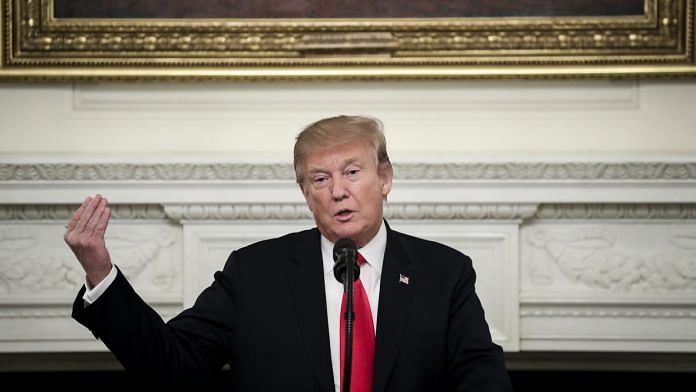President Donald Trump was widely mocked last week for his response to the crash of Ethiopian Airlines Group Flight 302, warning that “airplanes are becoming far too complex to fly.
In fact, he made a good point, which 737 Max manufacturer Boeing Co., airlines and pilots would do well to heed.
Modern passenger airplanes are by their nature complex – but in most cases, that’s a good thing. The mental attention of air crews is a precious resource, and automated systems allow this to be conserved for when it’s most needed. On top of that, the fly-by-wire systems pioneered by the Airbus SE A320 mean that most planes these days self-correct when pilots move the controls too aggressively – one reason why fatal loss-of-control accidents have fallen by three-quarters over the past three decades.
The problem comes with split-second decisions. Using autopilot to preserve a crew’s mental energy is all very well. Over time, though, mental muscles that go unused end up atrophying. That’s a problem because most air accidents occur in odd, unexpected situations where pilots are having to diagnose a baffling problem under high pressure. One 2014 study of highly experienced Boeing 747 pilots found that 15 out of 16 failed to react properly to misreadings of airspeed in simulator tests, to the extent that the “aircraft” started to stall.
Boeing should be worried about that, because a recurring comment of pilots who’ve flown the 737 Max and predecessor versions is that changes to the basic design and flight control systems make it feel like a different aircraft. Such differences risk breeding confusion.
One of the bedrocks of aviation safety is type classification. A brand-new aircraft must go through type certification, a laborious procedure where a regulator checks that the plane and every one of its component parts is safe. In the case of the Boeing 787, that took eight years and thousands of hours at the Federal Aviation Administration alone. Costs for the process can run into the hundreds of millions of dollars: Though Boeing produces new commercial aircraft no more than once a decade or so, the regulator spends about $230 million every year on certifying new aircraft and parts.
On top of that there’s type rating, which ensures pilots are familiar with the aircraft in question and fully qualified to fly it. This, again, can be phenomenally expensive. Pilots, who typically spend about $70,000 just getting a commercial license, will have to fork out another $30,000 or so each time they’re trained to fly a new aircraft – one reason why most stick to a single model.
The desire to minimize these costs is understandable, especially when there’s a global pilot shortage and a cutthroat aircraft market that typically leaves both Boeing and Airbus with single-digit profit margins.
Hence the attraction of the 737 Max. As an updated version of the existing 737 NG models, it’s managed to avoid both those hurdles. Pilots with a 737 type rating are allowed to transition across after a cursory classroom training course, while the common type certificate with the 737 NG means the FAA didn’t have to crawl over every detail of the new design with quite the rigor it would have to devote to a brand-new plane.
That’s attractive both to Boeing and its airline customers, but following these two crashes it’s worth asking: at what cost?
One automated feature that’s been named in relation to the crash of Lion Air 610 last October and could credibly explain some of the in-flight behavior leading up to the Ethiopian Airlines crash is the Maneuvering Characteristics Augmentation System, which helps correct for some of the changed aerodynamics created by the 737 Max’s larger engines.
There’s a detailed debate about whether Boeing gave pilots enough information about this feature in advance. On one hand, it’s possible that the paucity of references to the system in training materials blindsided the air crew and contributed to the Lion Air crash. On the other, it’s equally possible that deluging pilots with too much data could have led to confusion.
These problems seem intractable, but in truth they’re not. While it’s unlikely any plane will ever have a perfect safety record, a few more days of training and simulator flights ought to be enough to alert pilots to the differences between the 737 Max and its earlier variants. Likewise, a suitably tough regulator ought to be able to ensure that problems with new technologies are fully ironed out before a new plane is allowed in the air, regardless of its type certificate.
That will raise costs for manufacturers, airlines, and pilots, which will ultimately get passed on to the flying public. If we want planes to maintain the near-spotless safety record we’ve come to expect, that should be a small price to pay.- Bloomberg
Also read: Black Box shows similarities in Lion Air, Ethiopian Boeing 737 Max crashes






